City Of Joyce
“If you’re a person whose perception of the world is shaped by literature, Dublin can feel less like a place that James Joyce wrote about than a place that is about James Joyce’s writing. The city of his fiction exists in ghostly superimposition over the actual city, such as it is, and every street corner, every landmark, every fleetingly glimpsed stranger, can seem haunted by some Joycean revenant. If you’re already thinking about Joyce to begin with, Dublin will continually provide you with reasons to continue doing so. Joyce will not be escaped. He inheres in the city’s bones.”
Modern Craftsmen: Jason Trammell
by Awl Sponsors
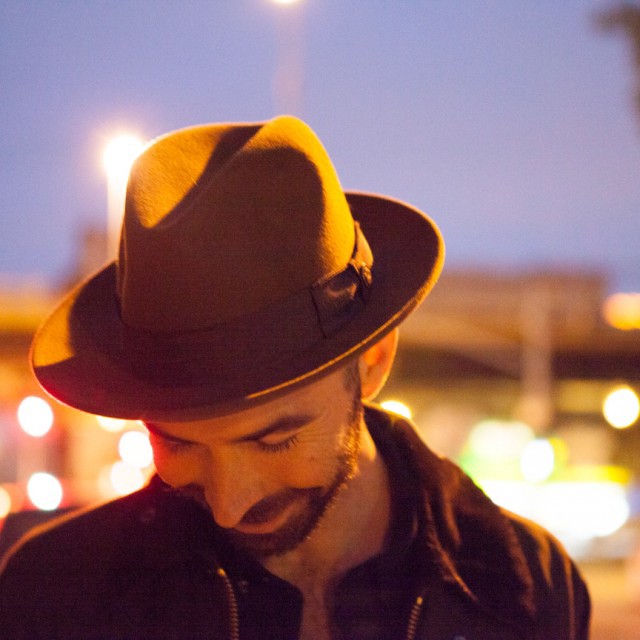
Jason Trammell is a Brooklyn-based drummer and musician who currently plays in the DFA Records band, Sinkane. Jason’s interest for music began at an early age in North Carolina where he began collecting 45s at the mall, listening to juke music with his parents on long car rides, and being exposed to some of America’s most iconic musicians. Soon, Jason took up the drums, eventually moving north to New York to expand on his interests in music. Here he began to work in sound design and film, as well as playing with different local bands, and pursuing personal passion projects.
We meet up with Jason at his practice space to find out how he has developed his craft as a drummer, as well we explore his different projects, ending the night at a local bar where he shares his passion for music with friends and locals.
Check out more videos here.
CRi, "Oda"
https://www.youtube.com/watch?v=UUKVvDNvASA
It’s been a decade since YouTube revealed to us the truth about teens: They are not tastemakers and their musical preferences provide no insight into the future; they listen to chart rap and country and country covers of chart rap; at the fringes, they like meme songs and yearning chant-rock from car commercials and Avicii. But in another world, the one where secret youth cabals tap into ancient teen magic to conjure new songs from the void (and in Canada), I imagine the kids are into something sort of like this. (via Earmilk)
Ruth Reichl On David Foster Wallace's "Consider The Lobster": "He Argued Over Every Edit"
“He and I had a huge fight about the editing of that piece…. We even fought about that title.”
Over on New Books In Food, hosted by Allen Salkin, Ruth Reichl talks about the editing of David Foster Wallace’s “Consider The Lobster” for Gourmet. Reichl had worked to get Wallace to cover something for ages, and finally he settled on a lobster festival. And then… he returned with a piece that was mostly about the agony a lobster must feel: “Is it all right to boil a sentient creature alive just for our gustatory pleasure?” Chaos ensued. Advertisers ran.
You can listen to the whole episode here, in which Reichl discusses everything from New York City hot dogs to James Beard to the history of Gourmet to her writing cabin. Mmm, writing cabin.
Journalists Cowed
Journalists Cowed
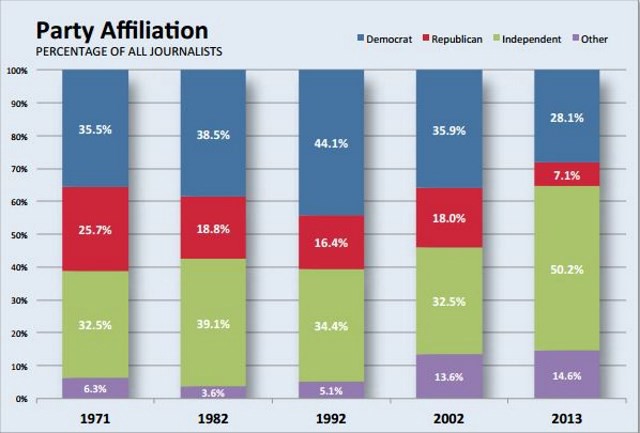
This thing will probably show up on your Facebook at some point today, most likely under one of those two-sentence headlines that everyone sneered at last year and then started using exclusively in let’s say… January? Like this one from the Washington Post: “Just 7 percent of journalists are Republicans. That’s far fewer than even a decade ago.”
There are other headlines that would also be accurate. “Just 28 percent of journalists identify as Democrats. That’s fewer than even a decade ago.” Or: “Haha, so the whole libertarian journo-man thing is a 90s thing?” Or: “Finally, a majority of journalists have realized that identifying with a political party is more trouble than it’s worth.” Or: “Twenty years of screaming “BIAS” has had a measurable effect on how journalist take voluntary surveys.” Or: “The internet did this.” All of these would work! But none of these would work on Facebook. In any case this is possibly the least important graphic in what otherwise feels like an important document about fatigue and uncertainty.
New York City, May 5, 2014
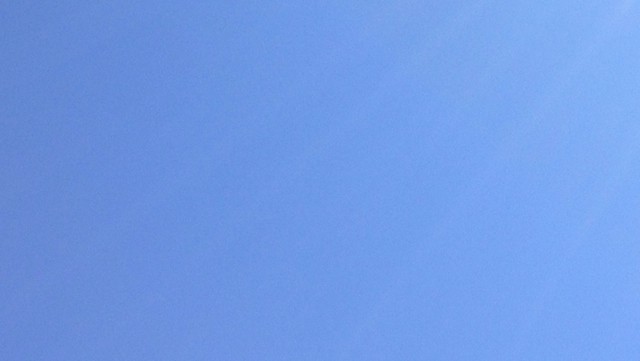
★★★ New leaves on Broadway were aglow in the morning’s sharp sunshine, under a clear sky. A cluster of blossoming trees shone like an oblong lampshade. The breeze was invigorating; the lack of warmth was not a liability now. From the vantage point of the sunny side of the streets, things in the shade barely seemed to be happening at all. Indoors, in the afternoon, the work systems were almost balky enough to justify escaping to the outdoors again, but things righted themselves; jobs had to be done. By rush hour, the tempting liveliness had given way to a gray, humid stillness.
The Man Behind Tech's Most Captivating Tweets
As the New York Times’s State of the Art columnist, Farhad Manjoo occupies the tallest perch in mainstream tech journalism. He’s a lucid writer and extremely affable — both strikingly rare charms in tech writing. More importantly, though, he produces one of the most oddly compelling Twitter feeds in media, a stream of straightforward commentary (“But voicemail. Of the things that have been said to be dead and really are — voicemail is one”) punctuated by bracing naiveté (“Are there real people who live/work in live/work lofts? I don’t believe it”) and borderline absurdist snippets of everyday life (“I am eating an unexpectedly delicious Chipotle burrito. Really well done on this one, Chipotle!”). The mix creates not a small amount of dissonance; Sam Biddle of Valleywag has accordingly dubbed Farhad “tech media’s preeminent naif.”
Farhad’s quick ascent from Slate and Fast Company to the Wall Street Journal to the Times has been accompanied by the suspicion, as articulated by Biddle, that there has been “a change in Manjoo over the past year or so — a drift toward Blodgetesque ultra-cluelessness.” It’s certainly true that Farhad’s Twitter stream has only become more gripping over the last year — but has he deliberately changed it? Can he explain the secret of being compelling on Twitter? We had a nice Gchat about it.
Twitter died the day we all stopped sharing what we ate for breakfast.
— Farhad Manjoo (@fmanjoo) May 6, 2014
Where do you fall on the whole “Twitter is dying” thing? Do you think Twitter has somehow changed over the last 6–12 months? Not in terms of features, which it has, but in the character and the shape of it?
I think it keeps getting better. I was worried that the IPO would push it to become something more like Facebook — specifically, that the feed would become more algorithmic, less of the mess it is now. But so far they’ve resisted making big changes. The one big thing they did was add threaded conversations, and that has made things easier to follow, and more fun as a result… So anyway, yeah, I don’t know if Twitter is dying or not. Its usage isn’t great. It’s a niche service. But for me, that’s great. As a user I love its nicheness. It still feels like a smallish group of people chatting about weird newsy stuff all day long. It’s funny and informative and in weird ways even deep. I’m a huge, huge fan.
What’s the deal with the name Softbank? Why does a carrier have the name of a bank?
— Farhad Manjoo (@fmanjoo) July 8, 2013
Your own Twitter feed is like an object of immense fascination. Sam [Biddle, of Valleywag] talked about it a bit when you started the Times job a few months ago, and I was wondering how you characterized that? How has your own tweeting changed over the last 24 months? Are there epochs of Farhad Twitter?
Yes. And… the thing is, this is hard to say without sound like some kind of tech dope. But in some way I think the person I am on Twitter is the real me. Twitter is the online service that replicates my brain most faithfully. For good and bad! As Sam will tell you. Let me get deeper into this: Obviously saying my Twitter is “the real me” is a loaded thing. We all have shades of personality expressed in different ways. But if (for some crazy reason) you wanted to get a glimpse of how I think, or the things I’m reading that influence how I think, I don’t think you can get closer than reading my tweets. (I don’t know if this is true just of me. Often I meet people I know on Twitter and they’re totally different in real life. And I wonder which one is the more authentic version of that person. For me, the answer is my Twitter version, because in real life, especially with new people, I am not quite myself.)
Do you use your NAS? How? Should I get one? Wondering if I should to make all photos available on all computers.
— Farhad Manjoo (@fmanjoo) March 18, 2013
So would you say there has to be a shift in the way you tweet then, toward a more authentic version of you? (The outside world seems to have decided there has been a shift.) Like Josh [Topolsky, of The Verge] tweeting, “Farhad.” Do you expect that kind of reaction now? Or know the tweets that get them?
I sometimes know which tweets will arouse Sam. But mostly I don’t think I can predict which ones will get the “Farhad” reaction… There has been a change in how I tweet over the last year, I think. But that’s mostly because of my job changes. When I was at Slate I was freer to say anything I wanted. I wouldn’t worry about, say, tweeting something that might reveal my politics. (See my tweets from the 2008 or 2012 election.) But after I started working at the WSJ and then the NYT, I got more careful about that. In part because I was told to tone that stuff down, but also because people react more strong to Fancy Newspaper Columnist says Pro-Obama Thing compared to just some guy at a Website. But that’s been the only conscious change I’ve made to my feed in the last year or so.
Do you still have fun with Twitter? This is what’s fascinated me about the declarations of Twitter being dead, is that the people saying it’s dead seem to be not having any fun. And I admit I get less joy out of what’s in my stream but I still have fun tweeting, which might just be narcissism maybe lol.
I have so much fun on Twitter. That’s mostly because I love news, all kinds of news, and Twitter is the most direct way to get news. Also, I spend a lot of my day alone — I mostly work from home and I spend a lot of the week going out and talking to people at tech companies. Twitter is a way to feel like I work in an open office. I can turn it off, though, which is something you can’t do in a real office. The way I can tell I have fun on Twitter is that I can’t stop using it. It is terribly distracting and I’d be better at my job if I didn’t look at it as often as I do, but though I have tried several times to quit, not looking at it feels terrible. So — does that mean it’s fun? I think so.
You have more fun tweeting than reading other tweets? I don’t think that’s true for me.
Lately! I feel like people are getting less absurd or maybe people are mining for faves? I was actually looking at your Favstar — most of the most faved stuff of yours is actually not the stuff I enjoy the most.
Wow, never looked at that. No, these are not my best tweets. (Some of them are faved a lot because they were promoted by the NYT account. That’s just buying favs basically.)
But I think as to your feeling that the service is getting less absurd. I don’t know. Maybe? I think these assessments are impossible, because Twitter on any given day is like the weather. It’s a reaction to thousands of forces in the news. Some days Twitter will just be worse than others. And maybe a dry spell will linger for months. But I don’t know I’d say it’s getting less absurd or more or whatever. Maybe.
Well, I feel like you have more people attempting to exploit Twitter more explicitly, right, and those entities are not there to have or make Twitter fun or interesting, per se,
like the explainer sites — so deadly serious, so designed to weed their way into your Twitter stream.
I think you’re right about that — there are people trying to exploit it. But what I like about Twitter is how much less effective that sort of thing is than on FB. On FB you have waves of content that are clearly gaming the algo, and when that happens it dramatically changes the service. On Twitter any one tweet is so tiny and easy to overlook that if things get out of hand they never get so…prominent. Terrible tweets and great tweets all last half a second. So even the worst stuff isn’t so bad.
What are the attacks on Danielle Steel? What do folks say about her? I’ve never heard them.
— Farhad Manjoo (@fmanjoo) January 25, 2014
What is your feeling about faves generally? Or faves versus retweets? I feel like I’m seeing a lot fewer RTs and than faves.
Favs — I like them. I used to hate them because I didn’t understand them. There wasn’t a widely accepted definition for what it meant to fav something. But I think in the last couple years that’s changed, so that now it means something like a head nod. I acknowledge the thing you just did. Once everyone sort of settled on that definition favs became useful and now I love them and wish there were favs elsewhere. (Email, crucially.)
I keep doubting that words are actually words. Is “nother” a real word? Like, “whole nother problem”? That’s a word I can write in a thing?
— Farhad Manjoo (@fmanjoo) February 28, 2014
A two parter: who do you think is great at Twitter, and who do you NOT want to be like on Twitter?
I donno. I don’t want to duck the question, so I’ll pick someone. I think Matt Yglesias, Joe Weisenthal and Dave Weigel are great at Twitter. But that’s kind of off the top of my head, and I don’t want to put too much stock in it, because in some ways I think that the question of who’s great on Twitter doesn’t really make sense. It’s like asking who’s great at a cocktail parties. There are some people who are better than others, but the fun of a cocktail party (not that there is any) is in the collection of people, not in any one person. I think Twitter is like that. What’s great about it is the awesome unmanageable flood of info any time you turn it on. The medium overshadows the personalities, I think.
What’s your strat for following people? And do you ever unfollow? I know I unfollowed you once when there was a day you tweeted so much I couldn’t handle it and then I forgot to refollow you for a while.
Very low bar, and I almost never unfollow. I probably follow a few new people every day, often people Twitter suggests. I like a big raucous feed.
So you’re a dip-your-toe-in-the-water type. How do you use Twitter day to day, what does that look like?
I check it second thing in the morning (after email). And then all day long. I turn it off when I’m writing, by which I mean I only check it every 30 minutes or so. Otherwise it’s every few minutes. I look at it at stop lights when I’m driving. In line at the supermarket. In the bathroom. I’m hooked.
Also, I feel like it has overtaken my brain, so that I think in tweets. I’ll see a thing in the world and begin thinking about a tweetable way to say it.
What does your wife think does she follow you on Twitter? Or is she like, “I get enough Farhad IRL”?
She doesn’t use Twitter (she uses FB, which I look at like once a week). I sometimes repeat jokes to her I’ve made on Twitter. I sometimes use material from our conversations on Twitter. Other than the fact that Twitter sometimes distracts me at home (which I try to avoid), she has no problem with my Twitter usage.
NIN Closer comes on when 3yo is in car. OK to keep listening?
— Farhad Manjoo (@fmanjoo) April 4, 2014
Do you use Twitter while you’re handling your son? I’m curious about parental Twitter strategies. I imagine all those times you used to just have to hold your kid and do nothing while it slept, now you can silently thumb at Twitter.
Sometimes. (I’ve got two kids, a 3yo son and 1yo daughter, actually!) It’s really not a good idea, but there are times (like when I’m sitting around while he’s taking a bath) when I look at Twitter. But I really try not to let them notice that I’m distracted, even when I am. This is the problem with phones generally, not just Twitter.
Have you signed them up for Twitter accounts to make sure they get their name, sort of like acquiring real estate to bequeath later?
No. That’s weird when people do that, I think. They have no Twitter or FB or even Gmail names.
I kind of want to keep going on the parental track like, do you let them have screen time?
Our son watches more TV than we’d like. He watches TV in the morning and after school, and on weekends too much. But this is just because we are busy and are trying to get other stuff done. We feel terrible about it, but not so terrible. But that’s the extent of their screen usage — they haven’t shown much appetite for more interactive games and stuff on iPads/phones. We use FaceTime.
Oh, I wanted to ask how the job is going. You changed [State of the Art] — away from just gadgets, which, traditionally it was more of a reviewing column. Has Pogue written you to be like, “I’d have done it this way” or “my videos were better”? Where do you see the column going over the next few years?
Right. I think of it as pretty much the same column I was doing at Slate and then the WSJ, which is: Write about whatever you feel is interesting related to tech right now. I want to be very diverse in topic selection — in the last couple weeks, I went from interviewing Mark Zuckerberg about Facebook to bionic hearing aids to Alibaba IPO. It’s all over the place, which is how I’ve generally worked, because I just like to learn about new things and I get bored easily. It’s a fun job! I’m hoping readers are liking it, because it’s a huge change from what Pogue was doing. I have gotten a handful of emails from people who say the column isn’t practical enough. They’re right, it isn’t. I feel bad for them about that, but: When the NYT hired me, they also hired Molly Wood, who does more reviews and practical stuff. And plus there is no shortage of useful tech insight elsewhere — and even Pogue and Mossberg are still just a few clicks away.
Idk, the new Yahoo layout means Pogue is many clicks away.
True!
The bionic iPhone piece is the best thing you’ve done in a while. It was like revelatory for me, and I still look at a lot of this stuff everyday.
I felt the same way. It was a brand new area for me. I was surprised it hadn’t been written about before. It’s not even that — the hearing aids have been out for months. I think it’s just out of the tech press’s general purview. I love topics that are like that.
Right, like Pinterest caught tech and tech press by surprise, because it’s still mostly white men thinking about white men as the default. How do you feel about the State of Tech Journalism?
OK but, I’ve really got to leave now. Though this is a totally interesting part of the convo… [Ed. note: We actually had reached the end of our pre-appointed hour; Farhad wasn’t just skipping out on the hard questions.]
Haha, alrighty thanks!
This Gchat interview has been lightly edited for clarity.
The Plot to Kill the Last Remaining Bodegas
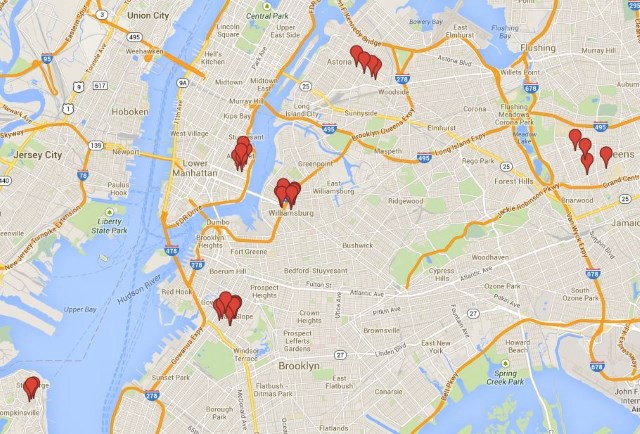
Governor Cuomo’s teen fun task force, which was created with a $147,000 grant from the NYC Department of Health to the State Liquor authority, has completed its first mission: The team visited 74 stores (not bars) across the five boroughs, 32 of which sold alcohol to underage decoys.
BAD WORK, bodega adults:
In total, the undercover minors were able to purchase alcohol at 32 of premises visited, including one out of 15 stores in the Bronx, 15 out of 16 stores in Brooklyn, 5 out of 21 stores Manhattan, 8 out of 16 stores in Queens, and 3 out of 6 stores on Staten Island. During the investigation, SLA Investigators entered the grocery and liquor stores separately from the undercover minor to observe and verify when illegal transactions occurred.
The results were presented oddly, with an emphasis on the cross-borough nature of the campaign, so the results don’t really say what they seem to say — these were actually short, focused marches, one bodega after the other, through a small handful of neighborhoods. This is very clear when the data is mapped, which you can see here.
For example, the “Brooklyn” sweep, in which all but one store violated the law, hit two small areas: a patch of South Williamsburg in the Marcy-Hewes-Metropolitan triangle; and short parallel stretches of 7th and 5th avenues in Park Slope below 9th street:

Alphabet City got the brunt of the team’s first trip to Manhattan:
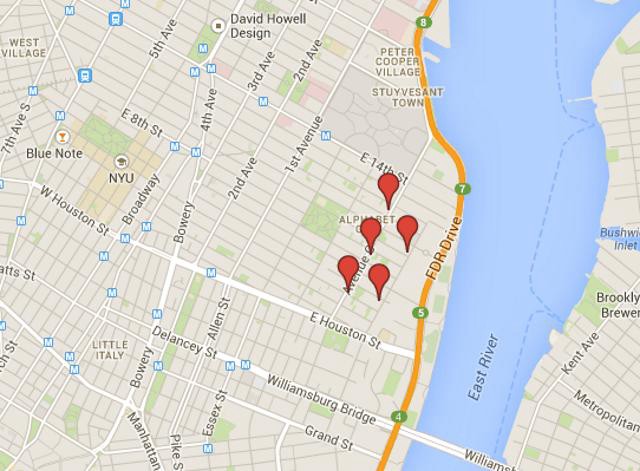
In Queens, investigators swept down Parsons Boulevard and then methodically approached Astoria on Broadway; in Staten Island, Tompkinsville racked up a few violations.
Anyway, this is just the beginning of what sounds like an extensive additional crackdown:
Through September 2014, the SLA will coordinate its regular city-wide details by conducting targeted compliance checks by the new unit at over 1,000 licensed premises. In addition to conducting compliance details, the SLA will compile data on the number of details by patrol borough, the number of licensed businesses visited, the number of non-compliant businesses, the number of repeat compliance visits for locations found selling to minors, and the disciplinary action taken by the SLA against violators…
Licensees charged by the SLA with underage sales face civil penalties of up to $10,000 per violation, with fines starting from $2,500 to $3,000 for a first time offense.
Some quick bad math: Assuming the best-case scenario for EVERY store fined this time around — first time offense, $2,500 apiece — violators will pay out at least $80,000 (maximum fines all around would bring that number to $320,000, and likely result in a few shutdowns).
But this is just the first sweep: According to the Governor’s office, this little grant will result in visits to about 1,000 total stores by September of this year. The first sweep was targeted oddly — a would-be underage drinker might think to visit those Williamsburg locations for easy beer, for example, but the targeted stretch of 7th avenue in Park Slope is populated entirely by infants and police officers — but still resulted in a violation rate of around 43%. Even if bodega owners become a little more cautious over the next few months they’re still in for a fair amount of pain.
In Brooklyn and Manhattan, at least, the places targeted so far tend to be bodega bodegas. That is to say: With few exceptions, they’re not operated by a large chain. They serve only the neighborhoods immediately around them, which are gentrifying quickly or gentrified long ago. The Park Slope, Williamsburg and Alphabet City violators list can also be read as a catalog of the last remaining familiar, reasonably affordable, kale-free places to buy stuff or say hello to another human or buy $1 coffee or loiter or to just exist for a few minutes. Or to buy alcohol illegally, sure! But a thousand stings later, it might be hard to look back at this and see anything else but a tax, and a regressive one.
One Day at the Mercy of New York's Most Ambitious Events Guide
by Matt Nestor
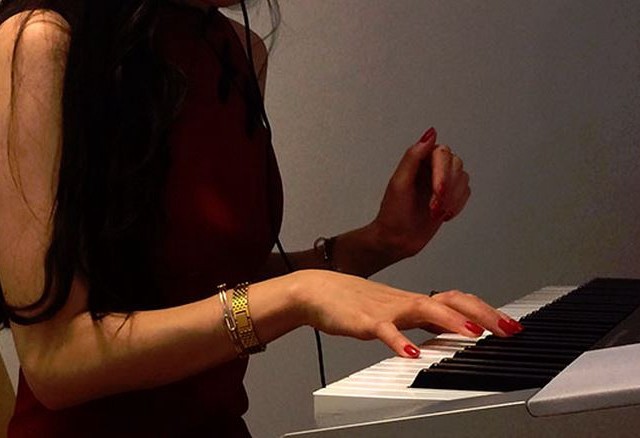
Nonsense NYC is a weekly rundown of “weird events,” “unique parties,” and “senseless culture in New York City” started 14 years ago by artist Jeff Stark. The criteria for inclusion on the list isn’t set in stone, but generally speaking, an event must meet the “rule of three”: Are at least three separate activities going on at once? In other words, a punk show or an art opening won’t make the list, but a punk show at an art opening probably will — provided that there’s also a sword swallower or cat juggler. It has, over the years, become the de facto guide to things New Yorkers feel like they should be doing.
The Nonsense letter makes for good aspirational reading, and I always skim the list when it arrives Friday evening: Knowing that these events are happening is, in some faint way, enriching. But something’s always stopped me from actually going to any of them. Maybe it’s just too hard to convince people to come with:
Me: “Yo Greggy, guess what: there’s a installation at Silent Barn tonight that ‘re-mixes architecture and space to create a sonic landscape by using the tools of ornithology!’ How about it?”
Greg: “I’d like to but… *cough* *cough*… I’m a little sick?”
It took a while, but shame at my own timidity finally got the better of me. On a recent Saturday, I ditched Greg and every other alleged convalescent in my life and tried to visit every single event listed that day. The goal proved too ambitious: I had to break at home for a nap, but I hit six events, three boroughs, and two states — all for about the price of an IMAX ticket to Spiderman.
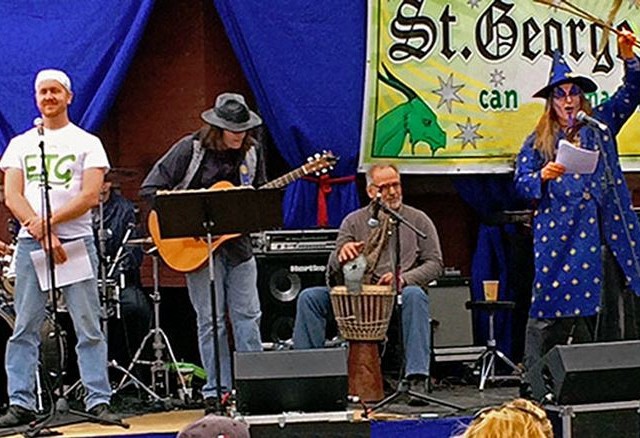
The Eighth Staten Island St. George Day Festival
To be listed as a Nonsense event, you have to be cheap and independent, but you also have to flaunt at least a modicum of pretentiousness. Maybe that’s why the Staten Island St. George Day Festival advertised itself as a “performing arts showcase.” But I’m a little skeptical. Yes, there was a dragon, and a guy in a wizard costume talking about the dragon, and yes, the wizard guy had a backup adding suspenseful throbs on the Djembe. Also present were some kids in costumes and a posse of drunks wandering in and out of the crowd, smoking our discarded cigarette stubs. But — and I don’t mean to be harsh — I’m not sure any of these parties would have snagged a slot in a Brooklyn performance art showcase, with the possible exception of the drunks.
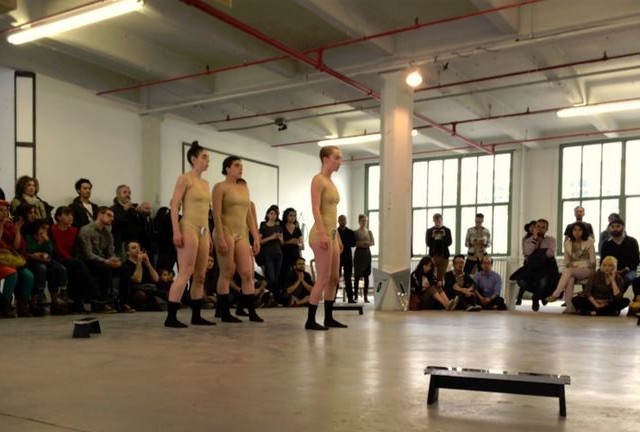
Industry City Open Studios
I took the ferry back to Manhattan and nipped over the bridge on my ten-speed, heading towards Sunset Park, where artists affiliated with Industry City Studios were holding their first open studio day. Industry City is an Instagram-ready conglomeration of eleven identical, parallel loft-buildings. Mostly home to small businesses and manufacturers, today it hosted not only the open studios but also various Nonsense-ready performances, including the dance stylings of the Zoorkhaneh Collective.
Manifestly, this was not Staten Island. The dancers, wearing cream-colored leotards adorned with metallic plates above their pubic bones, did a vaguely erotic dance to sporadic percussion accompaniment. The audience, mostly thin, creative-looking thirty year olds, sat watching with sober seriousness or filmed it on their iPhones. I liked the performance but missed an element of spontaneity: Where were the drunks?
Maybe I was just looking in the wrong place. In the building across from the dancers, I walked into the studio of an artist who was evidently the wrong side of three Sierra Nevadas. In a friendly smoker’s growl, he tried to explain to me the intricacies of plaster manipulation and then, when that didn’t work, offered me a beer. I politely declined; my day had barely begun.
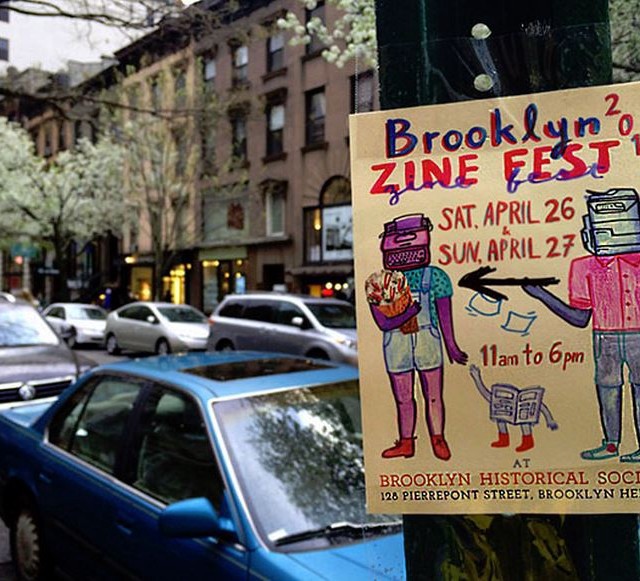
Brooklyn Zine Fest 2014
Staten Island to Industry City is ten miles; from Industry City to the Brooklyn Historical Society, host of Zine Fest Building, is barely three. Yet, in what I was coming to realize was the fundamental beauty of the Nonsense list, the crowd at Zine Fest was as different from the crowd at Industry City as the latter were from the S.I. set. Maybe in five years the Zinesters, having shed their dirty cut-offs and gratuitous locks of blue-green hair, will spend their weekends contemplating site-specific modern dance in artist lofts, but right now they’re doing their thing: doodles and poetry and poetry-doodles.
I don’t much care for zines, which always seem to total less than the sum of their many parts, but I bought a couple anyway. I could spare the seven bucks: I’d been out since noon, and I hadn’t spent a dime.
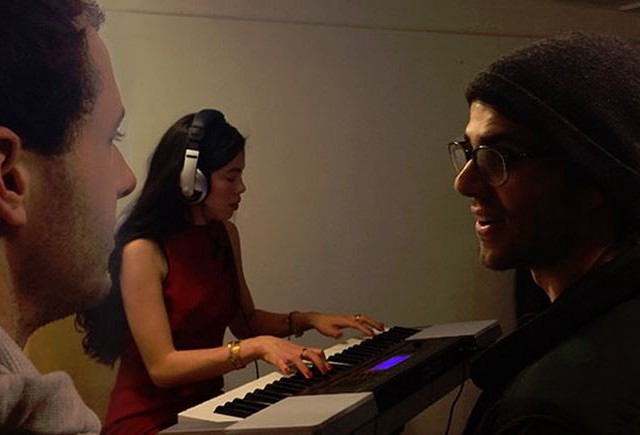
Museum of Beautiful People
The MoBP (as they abbreviate themselves) was something of a redundancy. Manhattan’s already a gallery of perfect-ten hotties; the moment I crossed the bridge, I was instantly surrounded by preening, coiffured, gym-toned people, the kind who won’t go to the deli for coffee without primping their hair. In fact, upon entering the “museum” (really just an LES storefront), I couldn’t immediately tell the beauties and the normals apart. Everybody seemed equally thin and expensive-looking.
The host, a flirtatious woman of about thirty-five, came to my rescue. Like a pair of generals reviewing their troops on parade, we exchanged notes on a model who sat with a book in her lap.
“I’m really into her shoulders.”
“They catch the light like highway reflectors.”
“Just like her cheekbones.”
Audibly evaluating the person directly in front of me raised interesting questions. Had the experience awakened me to hitherto unnoticed nuances of beauty? Or had it only re-confirmed my tendency to make snap surface judgments? One thing was sure: after my fourth event in as many hours, my brain hurt. I went home and napped.

Cat Worship
Apparently these cats, who call themselves the Morgan Avenue Underground and live in a house off the (you guessed it) Morgan L stop, hold a party every month in their very tidy basement. Slightly older than the zine crowd, slightly more lesbian than the Industry City attendees, the cat worshippers all seemed to know each other and I felt a little out of joint. I became the loser at the art opening who actually looks at the art: cat paintings, a cat wall projection, and a wall-mounted iPad which definitely would’ve been stolen if we were still in Staten Island. I put on the headphones, pressed play on the iPad and, for what were perhaps the best three minutes and two seconds of the whole day, watched a video called Dreams are Real. People, the cat-on-a-green-screen genre is officially over. Dreams are Real (an official selection at the 2014 Catdance film festival) is the best cat-in-space video ever.
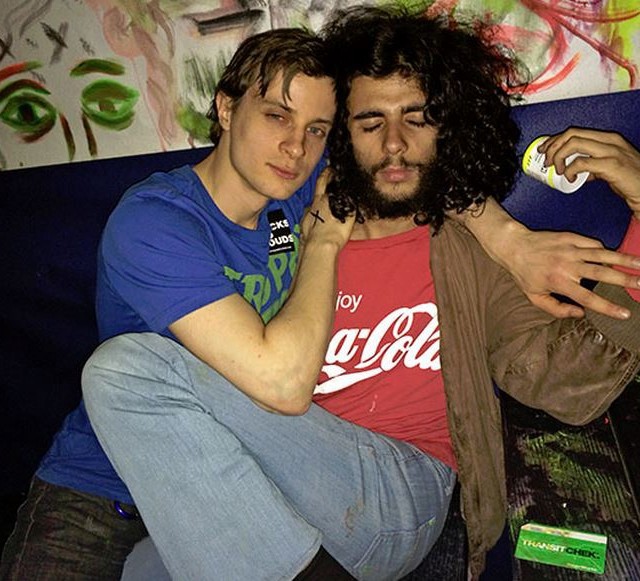
LOVE
One is skeptical of events which sell themselves too hard. A “7,000 sq. foot warehouse” is a verifiable quantity. But “the creation of endless universes living in infinite moments”? What does that even mean? Patently, nothing. I pushed away my doubts and took the PATH to Hoboken, then walked two miles to the top of the Palisades. In the quiet evening air, the Manhattan skyline ran to right and left like an all you-can-eat buffet of light; the whiff of a skunk and the chirp of crickets reinforced the sense of peace.
It wouldn’t last. The event listing claimed that the entrance would be “a tunnel of hypanogogic illusion projections.” What I saw was a bunch of men in Under Armour, urgently hustling us in through a side door. Pot fumes hit me the second I walked inside. No one was checking IDs. I ponied up the cover and passed through the “illusion tunnel”–really just a few duct-taped sheets–and entered a vast and desolate concrete cavern. Lights flickered morosely across the unclean walls. Fog rose half-heartedly from a fifty-dollar fog machine. Teens slouched over Solo cups or pecked away at cell phones, and though a band was playing no even tried to dance. I bought a cup of beer and retired to a corner.
Nonsense had delivered me into the bosom of genuine scenes five times already: not slickly packaged “entertainment experiences,” but the weird outcroppings of entire subcultures. The events were about specific tastes and concerns, and the desires of the public barely even registered. Take it or leave it, each group seemed to say: We are what we are and we’re not changing for anyone. And now, once again, I was in the midst of a scene, only this one was called “disaffected youth of north-central New Jersey.” Common identifiers included metal shirts and gauge earrings, cough syrup and tongue-piercings; if somebody else besides me had brought a cardigan, I didn’t meet him. This land was strange, and I was the stranger.
But Rumi was stranger still. As I sat and mused unhappily on the long walk to the PATH, a young man (Turkish, no visa) came over and sat down. I could hardly hear him speak over the din of the music.
“What’s that?” I yelled, cupping my ear.
“I’m sad,” he repeated and brushed the hair from his eyes.
“Why?”
“Because I don’t know anyone here.”
I felt a happy smile steal across my face.
“Put it here, partner. Me neither. Let me get you a beer and let’s make something of all this nonsense.”
Matt Nestor is a writer and editor living in New York. He blogs at thedailyvirgin.net .
Creeping Subway Despair Confirmed By Data
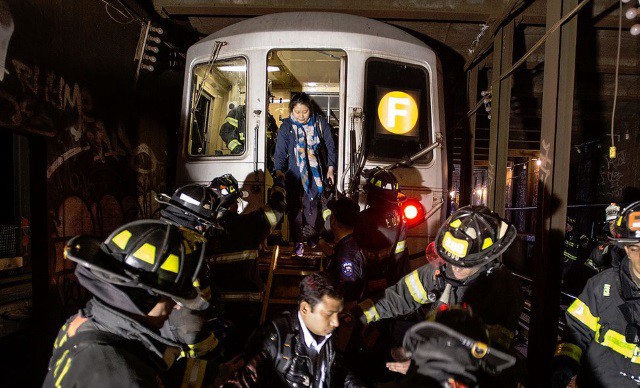
New Yorkers are as entitled to complain about the subway to one another as they are obligated to defend it to everyone else. Both activities sustain us sufficiently to endure the reality of the subway, which is not very good at all:
The NYPIRG Straphangers Campaign today released its third annual analysis of thousands of MTA “electronic alerts.” It showed that the number of alerts of delay-generating incidents had increased by 35% in two years – from 2,967 alerts in 2011 to 3,998 in 2013.
“The increase in alerts is a troubling sign that subway service is deteriorating,” said Gene Russianoff, staff attorney for the NYPIRG…
The data compared 2013 to 2011, since 2012 was a natural outlier. It also excluded “sick passengers” and police incidents, which don’t really tell us much about the MTA but which I’m still kind of curious about anyway. Where the story becomes vividly real is in the NYPIRG’s data on individual trains, which are falling apart.
The F had had the most MTA electronic alerts of delay-generating incidents of the 20 subway lines reviewed in 2013. Alerts for delays on the F comprised 8% of 3,998 controllable MTA alerts.
The L worsened the most — by 91% — from 96 MTA alerts of delays in 2011 to 183 alerts in 2013. (See Table Three.)
The four boroughs served by the subways all grew substantially worse between 2011 and 2013: Bronx (up 25%), Brooklyn (up 39%) Manhattan (up 39%) and Queens (up 24%)
“Mechanical problems” generated the most alerts — 35% — or 1,411 out of 3,998 alerts in 2013, followed by “signals” (1,230).
The number of mechanical delay alerts increased 51% between 2011 and 2013; the number of track delay alerts increased 101%, from 254 in 2011 to 510.
I also checked on the raw data, which is messy but navigable, to see what was going on with sick passenger/police numbers. It turns out kind of a lot! Sick passengers (immobile, giving birth, passed out, dead) were cited in 345 warnings in 2011 and 829 in 2013. GET WELL NEW YORK. Warnings labeled police/NYPD/FDNY jumped from 667 to 893, but labeling is less consistent so I wouldn’t read too much into that. Those aren’t service issues, exactly, but when you’re stuck in a tunnel with nothing but a book you don’t want to start and a phone that can’t quite connect the difference doesn’t really seem that significant.
This seems like a good time to mention that New York’s bus system is criminally under-appreciated, and that you can get live bus times from your phone at basically any time. [Photo via the MTA]
